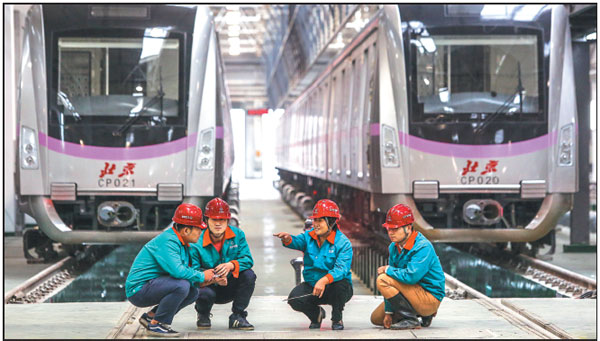
Areas of improvement include air pollution, traffic congestion and water resources
Beijing has become more livable in the past five years, but still has problems with transportation, air quality, water resources and the degree of openness, according to a report.
In the latest livability index issued by the Beijing Municipal Bureau of Statistics, designed in partnership with the Chinese Academy of Sciences, the capital improved 6.6 points over the reporting period to score a 118.9.
Despite this overall progress, traffic congestion, air pollution, a lack of clean water and comparatively fewer tourists than other international cities remain areas of improvement, said Wei Xiaozhen, a senior bureau officer in charge of the report.
The city's rail network, which reached 554 km last year - 1.6 times longer than it was in 2010 - "is still considerably lowers than other international cities like Tokyo and London", Wei said.
Meanwhile, road density - the ratio of a road network's length to the area it occupies - is also low in Beijing, just 6.3 km per square km compared with 13.1 km per sq km in New York, according to the China Sustainable Transportation Center.
According to a study by Beijing Normal University, the average commute for residents in Beijing is 97 minutes a day, the longest in the country.
Of the capital's 21.7 million permanent residents, 12.8 million live in its six inner districts, averaging 1,323 people per sq km, which is seven times the average population density of the entire city.
Levels of PM2.5 - airborne particulate matter with a diameter of less than 2.5 microns that is harmful to health - fell to 80.6 micrograms per cubic meter in 2015, according to a report by the Beijing Municipal Bureau of Environmental Protection.
However, the capital's air pollution is still above the national safety standard of 75 micrograms per cu m.
Last year, Beijing experienced 186 days when the air quality surpassed the national safety standard, and the city plans to further limit pollution, by 2030, to the 35 micrograms per cu m upper safety limit set by the World Health Organization.


















































